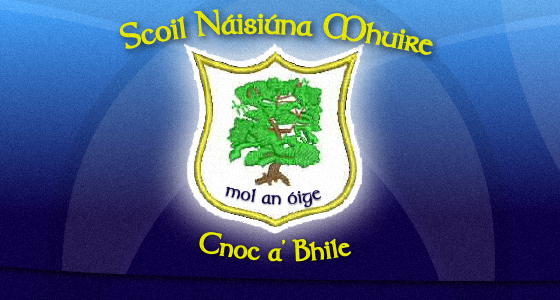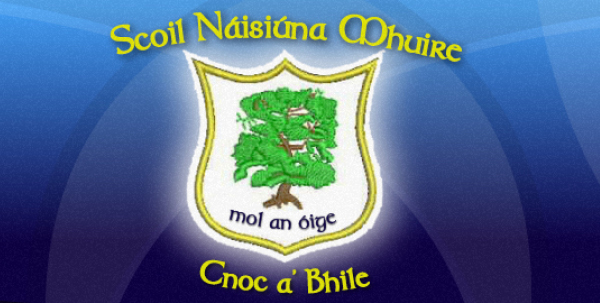Halloween Games and Fun
Samhain or Halloween – An Ancient Celtic Irish Festival - Where our Traditions and Games Come From
In the ancient Celtic world of Ireland, Samhain was the end of summer and the beginning of winter - a time of long and cold nights. As these two periods of summer and winter crossed over at Samhain, the dead supposedly returned to the world of the living. All over the country large fires were lit to keep evil spirits away. In parts of Ireland it was believed that a Púca would cast spells on people and bring bad luck to families and communities.
Ever since the time of the Druids, many customs and traditions have evolved in celebration of Samhain in Ireland. Originally Samhain occurred at the start of November. When Christianity came to Ireland, the church did not approve of the old, pagan Druidic festival and created the vigil of All Souls’ Evening, (or all Hallows’ Eve) on October 31st, the Feast of All Saints’ on November 1st and the Feast of All Souls’ Day on November 2nd.The Irish Celts were reluctant to give up their important festival and so they celebrated Samhain as All Hallows' Eve, which later gradually changed to Hallowe'en and Halloween.
These three days were one of the most important festivals of the year, and were celebrated throughout Ireland with feasting and merrymaking, as well as with rituals and remembrance for dead family members on All Souls’ Day. By Samhain or Halloween farming activities had been completed and it was a time to celebrate the harvest and get ready for a much-needed rest during the long dark winter in preparation for the spring.
In the old days, people believed that on this night many evil spirits and fairies travelled about the country. For protection against fairy mischief, holy water was sprinkled on animals and food offerings were left outside the house for these spirits and fairies. Children were taught not to eat wild fruits on this night, or afterwards, because it was believed that the Púca went about spitting on them and making them unsafe to eat.
People lit bonfires and made much noise to drive away the evil spirits and travelling alone was avoided on this night. With fairies, ghosts and the ‘Púca’ thought to be out and about, people feared being kidnapped by them. It was believed that if you disguised yourself as a spirit you would avoid this, because the ghosts from the Otherworld would not capture their own. Wearing a mask or a frightening disguise was believed to trick the Púca and the spirits. To this day witches and ghosts are still popular choices for Halloween costumes. Halloween is still a time of year when families and friends like to spend time telling and listening to ghost stories at home around the fire.
At this time of the year children visited relatives and friends and were given gifts of apples and nuts. Often they dressed up in scary costumes of witches, ghosts and monsters to frighten away the fairies and the Púca. They also played lots of games. One of these games was ‘Bobbing for Apples’ which is still a popular Halloween game today. Very often coins and nuts were also placed into the basin and many of us remember getting very damp while ducking into a basin in pursuit of coins ! ‘Snap Apple’ is a game during which a child or adult tries to take a bite out of an apple hanging from a string (sometimes with a blindfold) – not an easy task but is still great fun!
Many fun games were and still are played upon the theme of identifying a future husband or wife. In one game, four plates are put out on a table. Water is poured into one, a ring is placed into another, some clay is put into the third one and some straw, salt or oats into the last plate. Someone is then led to the table blindfolded and depending on whichever plate the person places her/his hand so her/his future will turn out! The water means travel, the ring means marriage, the clay means death and the fourth plate means riches. The plates are then changed about and others are led up to the plates to take their turns.
And if you’ve ever wondered where we get the tradition of carving pumpkins, it dates back to 18th-century Ireland, when a mean and nasty blacksmith named Jack was not let into heaven. He was so bad that the devil didn’t want Jack in hell either so Jack’s spirit was condemned to wander the earth forever and ever. But the devil did grant Jack one request. He agreed to give him something to light his way - a burning coal ember, which Jack placed inside a carved-out turnip. This is how the tradition of the Jack O’ Lantern was born. To this day, people in Ireland still carve out turnips or pumpkins and light them with stumps of candle. They’re then placed in a window or put on a gate post outside the house.
In America the custom was continued by millions of Irish emigrants who carved out pumpkins because they were a lot more plentiful than turnips in America – and they are also a lot easier to carve than a hard turnip!
Colcannon was a favourite traditional Irish dish of long ago which is still very popular today and is very easy to make. Boiled potatoes are mashed and then mixed with cooked green cabbage and chopped scallions. The mixture is then seasoned with salt and pepper and a large hollow is made in the centre in which a generous amount of butter is placed to melt. Whether served in individual bowls or from a common dish, the custom is to dip a spoonful of the potato mixture into the butter before eating it. Sometimes Mammies and Daddies put coins wrapped in baking paper into the colcannon for the children to find.
Barmbrack is another traditional food which we eat at Halloween. It is a rich fruit bread, which is delicious when covered in lovely creamy Irish butter. It is the custom to wrap various items and hide them in the barmbrack – a wedding ring means marriage within the year, a coin means riches and a pea means poverty.
In America there is no mention of Halloween until the early 19th century, when over 2 million Irish people, who were escaping the Great Famine from 1845-1849, emigrated to America. These Irish people brought their old customs and traditions, such as Halloween, with them to their new home. Nowadays Halloween is a huge money-making event in America.
Scoil Mhuire Knockavilla / Knockavilla National School, Killenure, Dundrum, Co. Tipperary, E34 TY07, Ireland Phone: 062 71533





